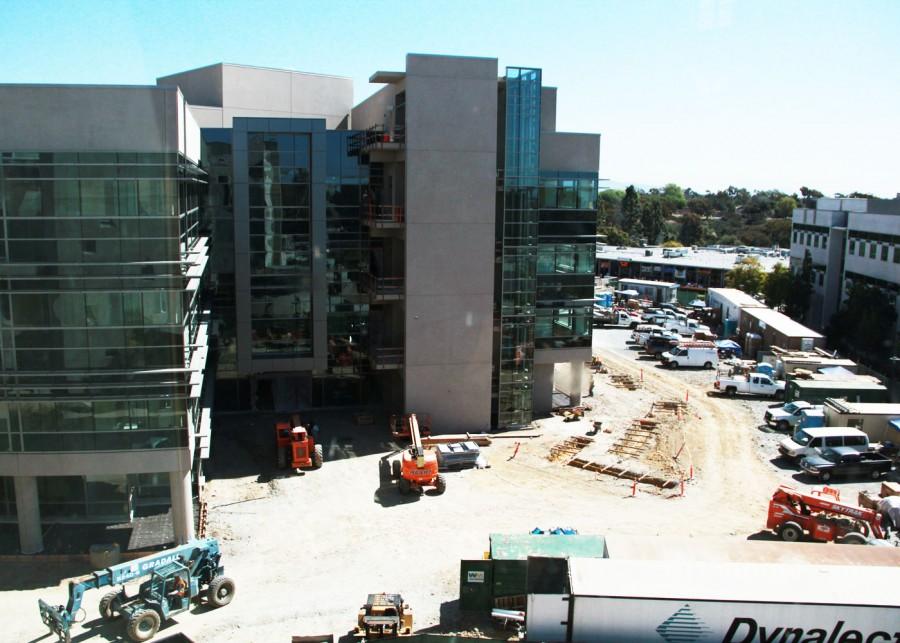Walking around Mesa College, one can’t help but notice the large buildings under construction. Recently the college has been undergoing a makeover.
For example, the Student Services building has only been open since Oct. of 2012. One can see from the quad, the future Math and Science building, which Vice President of Instruction, Tim McGrath, anticipates to be completed by next year.
There are currently blocked off areas between the K-100 and the L-100 buildings, as well as near the campus library, and G building. These are blocked off for the safety of students although causing temporary detours throughout the school.
These projects are possible due to Prop S and Prop N, the SDCCD Board of Trustees and local taxpayers’ money. Prop S and Prop N are bonds, both funding the Mesa College construction projects.
Prop. S was passed in 2002, and Prop. N in 2006, sending Mesa College $438 Million to rebuild the campus.
Due to the Propositions, many contractors have been anxiously proposing to work on site. LEED Project Manager, Diane Malone, who is responsible for overseeing all of the projects, said, “We can get fifteen or sixteen proposals sometimes.”
LEED stands for “Leadership in Energy and Environmental Design,” an internationally recognized Green Building program. These projects must comply with the sustainability initiative and the Green Building Policy. Diana Malone hires contractors to work on said projects who meet the qualifications, which include firm experience in” Building Information Modeling,” whereas buildings are constructed virtually with programs, to map the intricate details of the building and so resources aren’t wasted.
So what happens daily at these sites? The average work day on the construction sites start at 7:00 a.m. and ends at 3:00 p.m. “There is no specific method on how to construct a building, but there is a plan that has been developed and was developed a long time ago that has been followed since the start of construction and will be followed till the end of construction,” contractor Ross Malik said.
Even though the construction workers may be qualified to work on site, there is the possibility of accidents in the work place. “The plan, as we go along has been modified several times, sometimes daily to compensate for varying elements that have occurred during a project,” Malik said.
SDCCD employs safety officers that visit the sites once or twice a week, to make sure accidents do not happen. Malik is pleased that there is extra supervision and says that having an extra set of eyes on what’s going on is very useful and convenient.
There is also required safety training. “Everyone working on site or driving a truck has to go through safety training”, Malone said. Mandated training by the state of California as well as formal certification of training is necessary to use heavy equipment such as cranes. However, Malik said, “ If it’s a fork lift or back hoe or something like that, there’s more of an informal training that’s not state mandated but on-site.”
The Safety of workers is well observed, and if safety violations should occur, the contractors, the staff and the safety officers can and may reprimand any worker and send them off the site to avoid accidents. “The policy of the job site is that they wear hard hats, safety glasses, safety vests, gloves, work boots, long pants, and basically shirts,” Malik said. When working on a multi-level building, workers are required to wear fall-hazard equipment and violations will not be tolerated.
So when will the construction on campus end? It will end by 2018. This is only the beginning of the campus reconstruction and development, which aims to improve the campus entirely. The plan still calls to reconstruct the cafeteria, bookstore, the fitness center and the quad. It does not include the gymnasium, the art and drama departments or L-100 Buildings.
Tim McGrath was disappointed when heard not every building would be changed. “We don’t have a performing arts building, so having a 300-400 seat theater is something a college this size can only use but really needs. The Gymnasium is- I don’t know- 50 years old?” McGrath said.
For now, the near future entails more construction but it will only benefit in the long run.



